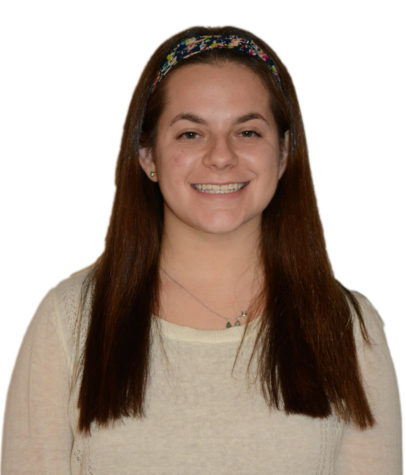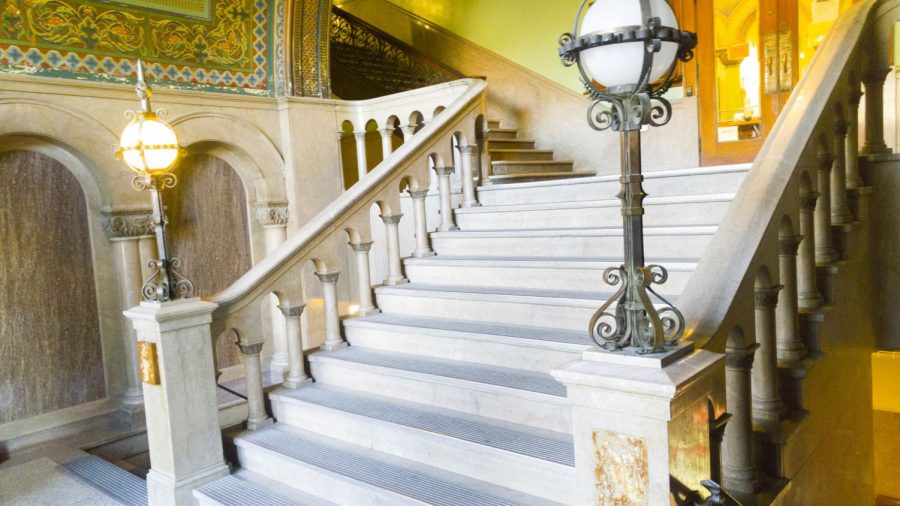University needs to improve accessibility to students with disabilities
Because Altgeld Hall, located at 1409 W. Green St. in Urbana, was built in 1896 and 1897, it lacks many accessibility features.
Nov 30, 2017
 Tables reserved for close view of a television screen with closed captions; signs indicating at which tables interpreters would be available; every screen with a section filming the ASL interpreter on the main stage; every accessibility accommodation you could imagine everywhere you turned.
Tables reserved for close view of a television screen with closed captions; signs indicating at which tables interpreters would be available; every screen with a section filming the ASL interpreter on the main stage; every accessibility accommodation you could imagine everywhere you turned.
This was my view at the Ruderman Family Foundation Inclusion Summit in Boston, Massachusetts.
Being a university student comes with a lot of stress, a lot of sleepless nights and a lot of opportunities to attend conferences for free all over the country, and even the world. For any field of interest, find a conference, and you can be pretty certain they will have a program for students to attend for free. As the future leaders of the world, the ability to access a program and meet and network with leaders in the field is priceless.
I was one of just over 100 college students at the Ruderman Inclusion Summit as part of Hillel International’s cohort. I got to meet students from all over the country interested in future professions connected in some way to the subject of disability inclusion and who are interested in finding ways to make their campuses more accessible.
I thought back to a special education course I took at the University my first semester freshman year. We learned of the vibrant history of the University and how it has led the way nationally in disability inclusion. The work began when injured veterans were returning from World War II and needed accommodations to attend school.
Get The Daily Illini in your inbox!
In 1949, when the University of Illinois Galesburg campus, which, at the time, held the Disability Resources and Education Services, was supposed to close, Tim Nugent went to the state capital to convince them that students with disabilities should be able to attend classes at the Urbana-Champaign campus. The petition was successful and sidewalk wheelchair ramps were put in place, and a lot of attention was brought to the topic of inclusion.
Transportation accessibility was one of the next changes to come. DRES became a resource center and a provider of scholarship and research opportunities. Restrooms and water fountains that were accessible were spearheaded by Nugent.
Some of these accommodations may seem obvious today, but in all reality, there is still so much that is inaccessible on our campus.
Like many students, I have spent many late nights in the University libraries. While many buildings have ramps and elevators and some kick plates to get into the building, many rooms inside are still lacking these services. Think about the arrangement of chairs in your lecture halls and discussion sections — are they easily accessible to someone who is in a wheelchair or using a white cane?
Spending a night in a library may not be what everyone wants to do with their time, but it should be an option for each and every student.
There are a litany of online websites we are all required to use to be able to succeed in our classes. A quick run of the Compass website through an ADA accessibility check will illustrate numerous flaws on the web page, making it incompatible with adaptive technologies for students who can’t read what is on the site for themselves. Links are not coded correctly to work with the technology that helps so many students.
Learn.edu had just as many errors in accessibility. Those are only two of the many sites I have used in the last 2 1/2 years here. I have enough difficulty keeping track of all the online sources to submit my homework without having to question if I will be able to get all the information I need.
Our lecture halls are often taught in massive rooms with one professor standing at the front speaking alone the entire time. Rarely will there be interpreters, and only some of my online lecture components have come with closed captioning. I took an ASL course as a freshman and would love to learn more. Just this week it was announced that the first level ASL class will not be offered moving forward as the program will only have one real instructor.
One in 5 people have a disability in this country. While DRES may provide these services for students who request them, the way our school is designed, not every student can have the same opportunities to succeed and grow.
The population of people with disabilities is the largest minority group in the country. While there are always many topics to be discussed and a need for progress to be made, this should be a priority for our University. Members of each of these communities must be able to educate the rest of us on what they envision as the most necessary adaptations. It is not for anyone else to decide for these communities what their college experiences should look like, yet we together should work so that everyone can reap the full benefits and rewards of attending this University.
We used to be the leaders in the topic of inclusion, and we should work together to get back to that place.
Hayley is a junior in ACES.






